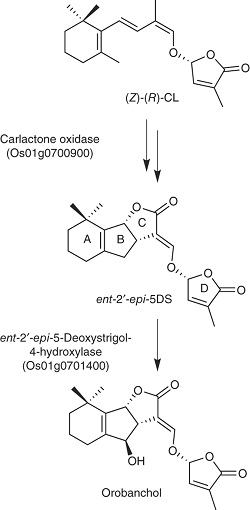River subbasins more depleted than
official figures show
09 April 2024
Published online 27 October 2014

© Zhang, Y. et al./Nature Chem. Biol.
Enlarge image
Strigolactones are important regulators of plant growth, specifically of processes like branching and root growth, determining the overall shape of the plant.
Now, in a paper appearing in Nature Chemical Biology1 , a research team has unravelled some mysteries in the understanding of strigolactone biosynthetic pathways, improving our ability to engineer plant architecture by manipulating strigolactone biosynthesis.
The team, which included Al-Babili's group at the King Abdullah University of Science and Technology (KAUST) in Saudi Arabia, introduced known biosynthesis genes into tobacco leaves together with candidates for catalysing the final steps. By identifying the molecules synthesized in the leaves, they determined which genes enabled the synthesis to achieve completion.
Crop breeding and agriculture are two areas that are likely to enjoy significant benefits from the ability to control strigolactone levels.
“Knowing the full biosynthesis pathway is a crucial step in developing crops with optimized architecture,” says Al-Babili.
Strigolactones released by roots also play a key role in the germination of parasitic weeds which are a major agriculture problem since they reduce the yield of many crops. “If we can modify the amount and pattern of strigolactones released by roots, we will be able to alleviate the severity of this problem.”
doi:10.1038/nmiddleeast.2014.256
Zhang, Y. et al. Rice cytochrome P450 MAX1 homologs catalyze distinct steps in strigolactone biosynthesis. Nature Chem. Biol. http://dx.doi.org/10.1038/nchembio.1660 (26 October 2014).
Stay connected: